14 Sommelier Suggested Wines You'll Want To Taste
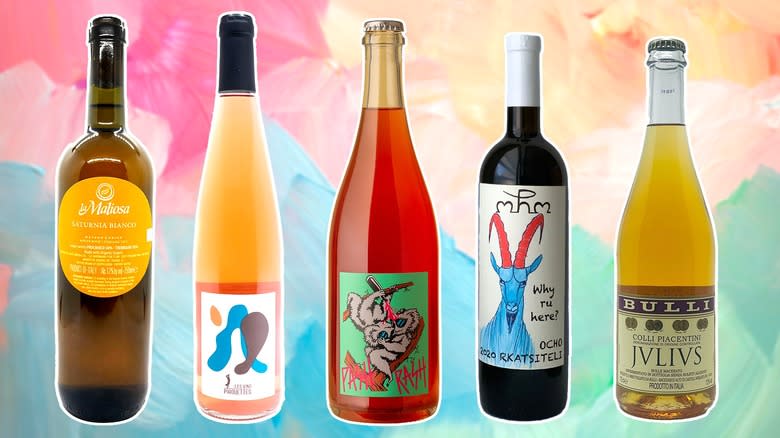
I'll be honest, there are a lot of drab wines out there that just fall flat. If you're looking to swirl something around that will get you thinking and really wow your taste buds, you'll have to dive deep into the selection at some specialty shops and get curious. There are plenty of unique wines to pique your palate, you just have to know what to look for.
As a sommelier, I taste lots of wines, from rare grape varietals to stylistically distinctive wines to complete winemaker line-ups. I chose this collection because it encompasses hard-to-find grape varietals, curious winemaking styles, and select bottles from vignerons thinking outside the box.
An indigenous rkatsiteli from the country of Georgia brings acid and tannins within a fruit and fennel profile, while the famous oxidized Vin Jeune from the Jura region of France is intensely nutty and rich, resembling a dry sherry that you might use for cooking. Whether you're looking for rare and expressive grapes or wildly aromatic skin-contact bubbles, you'll find something unexpected and delightful here.
Read more: 13 Liquors Your Home Bar Should Have
Château Roûmieu-Lacoste Sauternes
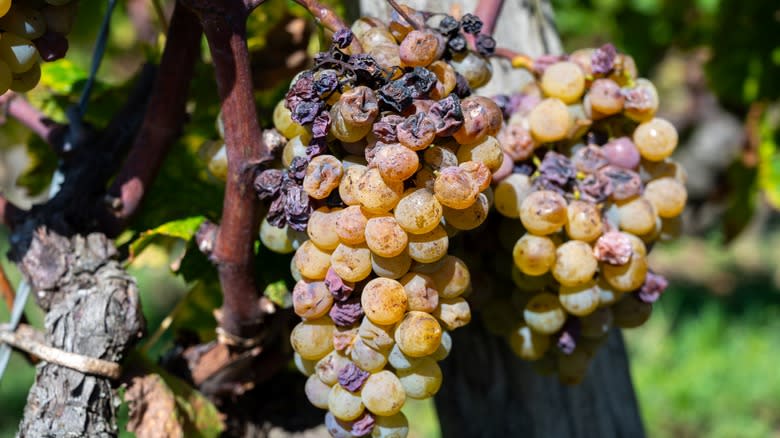
Sauternes is both the wine region in the southeast of Burgundy, France and the wine itself. A sweet wine, Sauternes stands apart thanks to the unique aromatics and flavors developed from Noble Rot. While Noble Rot doesn't exactly sound like a good thing, it's a very specific and desired fungus (botrytis cinerea) that can be achieved in the right conditions. Infecting various bunches throughout the vineyard, the fungus dehydrates the grapes, concentrating fruit flavors, and sugars, imparting an earthy nuttiness to the finished wine.
Sauternes is primarily sauvignon blanc and semillon, with a bit of muscadelle. The aromatic grapes and Noble Rot result in a wildly unique wine, with concentrated flavors of sweet honeysuckle, peach, nectarine, fresh almond, and mushroom. While Sauternes is a sweet wine, it isn't cloying because the grapes are harvested while they retain significant acidity, balancing the overall profile. This combination of residual sugar and acid allows the wine to age successfully, developing even deeper savory notes. Sweet, fresh, and complex, Sauternes is unlike any other wine.
Get ready to spend a little more on a Sauternes wine. For a high-quality, expressive wine that isn't too pricey, I recommend Château Roûmieu-Lacoste which will give you deeply ripe peach drizzled with honey alongside apricot jam.
Domaine Amélie Guillot Vin Jaune
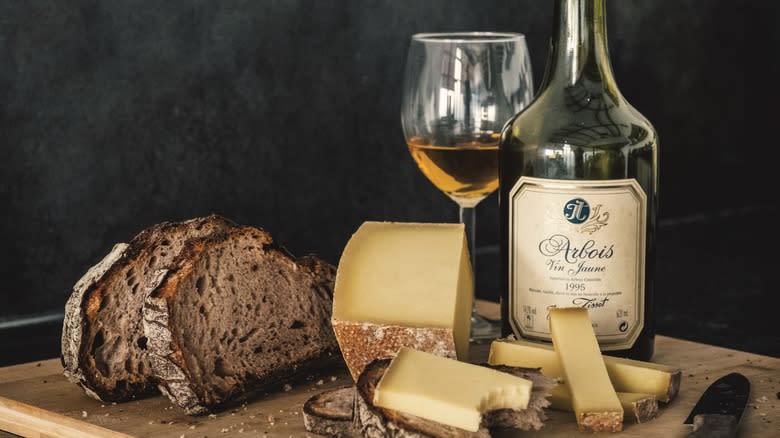
Vin Jaune is an obscure, oxidized white wine from the curious region of Jura, France, home to some exquisite wines. Made from 100% savagnin grapes, the 'jaune' part describes the wine's uncharacteristically yellow hue. Instead of avoiding oxidation, like most wines, Vin Jaune embraces it to create a distinct profile. An air gap allows a thin layer of yeast to develop on top of the wine as it ages for numerous years, creating characteristics reminiscent of Fino Sherry.
A sip of Vin Jaune is a wild experience because you'll likely question whether it actually is wine that you're drinking. There is a richness to it, yet it's bone dry. With a full body of concentrated flavor, and unexpected notes of toasted nuts, curry, and dried apricot, it almost has a brininess to it matched by sourdough toast.
If you are an adventurous drinker looking to try a dry wine with big complexity, give Vin Jaune a try. I recommend a vintage from Amélie Guillot. She carefully transforms old vine fruit into thoughtful expressions with big flavors of baked apple topped with lemon zest.
Bulli 'Julius' Bolle Macerato Frizzante NV

This is a wild little wine from Emilia-Romagna, Italy. Made from 100% malvasia di candia aromatica and grown in limestone-based soils, it's a gem from the land of bubbles brought to you by Leonardo Bulli. Made in the metodo ancestrale, the wine goes through a secondary fermentation in bottle, capturing the CO2 and becoming a sparkling delight. The wine is a glowing orange hue reminiscent of a good sunset. The grapes macerate on their skins for five days and then are gently pressed. This imparts not only the orange color, but also adds a layer of texture, tannins, and flavor to the wine. The combination of mineral-based soil, aromatic grape varietal, skin-contact fermentation, and natural bubbles makes this wine highly unique.
When you pop the bottle and give it a swirl, it offers up overwhelming yellow floral and citrus aromatics. It's dry and zingy, with each bubble full of juicy peach and apricot accompanied by pleasantly grippy stone fruit skin, black tea, and a wet stone minerality. While it is a wine, it almost feels more like some sort of hybrid drink of wine, kombucha, cider, and really good sour beer. It's very unexpected, wildly refreshing, and will pair beautifully with about a thousand different things.
Ocho 'Why R U Here?' Rkatsiteli
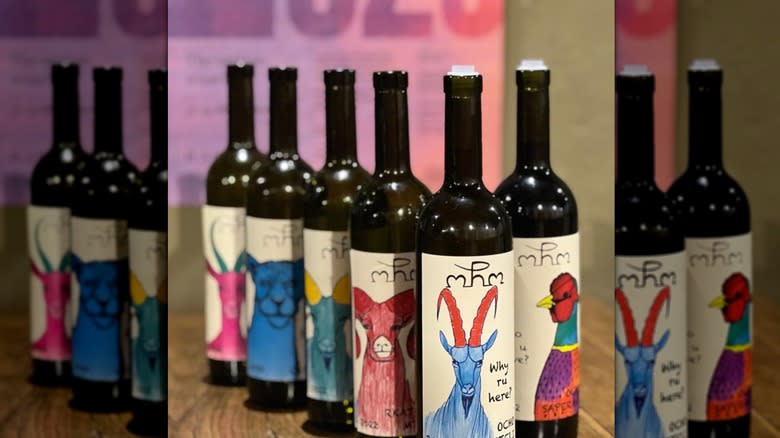
If you want to get to know an interesting wine from the birthplace of orange wines, look no further than this skin-macerated orange rkatsiteli and mtsvane kakhuri from Ocho. Made in the ancient and traditional method of fermenting and aging the grapes on their skins in ceramic amphora, the wine is distinct and defined by the process and the inherent characteristics of the indigenous grapes. A relatively long skin maceration of six months gives a lot of texture to the wine and adds complexity to the overall profile, giving off forgotten tea leaves, concentrated stone fruit, hibiscus, and a grown-up astringency.
A rich amber hue, the wine looks, and is, somewhat oxidized in the glass, appearing like dried orange peel in color. With aromatics of white flowers, tangerine, rust, and herbaceous foraged herbs, it's immediately intense. It's a unique heady orange wine thanks to the longer maceration. The aromatics carry through onto the palate and are accompanied by dried pineapple, a mushroom earthiness, stewed apples, and orange pith. It's a bold exploration of the two indigenous grapes and the stylistic representation rooted in Georgian winemaking.
Borachio 'Pash Rash' Rosé Pet Nat
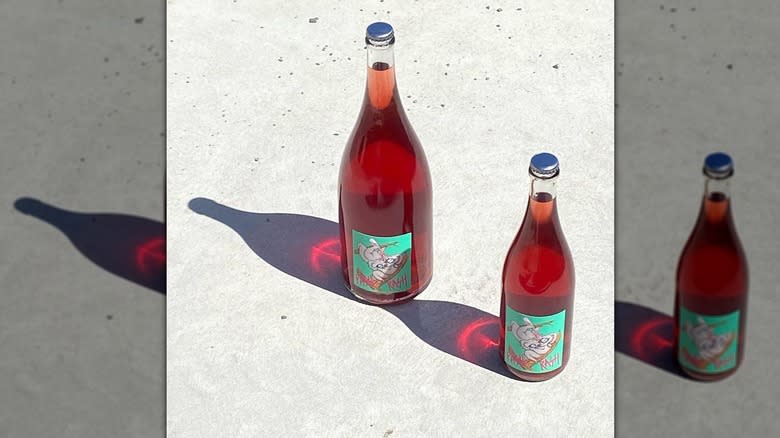
A delightful and curious wine from the Adelaide Hills in Australia, 'Pash Rash' is a blend of numerous white and red grapes, made into a rosé, and fermented in the metodo ancestrale to create punchy little bubbles. Primarily chardonnay, with pinot noir, pinot gris, and savagnin, to add complexity and structure, the wine is super fun and charming with a very non-typical wine personality. It's a gorgeous hue of strawberry-watermelon juice, cloudy with swirling little puffs of yeast circling like a docile tornado when you tilt the bottle on its side.
It definitely has an easy-drinking attitude, with thirst-quenching characteristics from the dry bubbles and high-acid red fruits hitting your palate. It smells like a mash-up of the perfect strawberry shortcake and hibiscus tea with a relatively strong citrus presence of mandarin orange and grapefruit. Ripe raspberry, muddled peaches and cream, and a bit of light and earthy funk, like hay drying in a barn, fill in the wine, making it simultaneously energizing and thoughtful. Pash Rash is a unique wine that breaks the stale parameters of what wine should or shouldn't be, opening up a whole new world of fun and flavor.
Ktima Gerovassiliou Malagousia
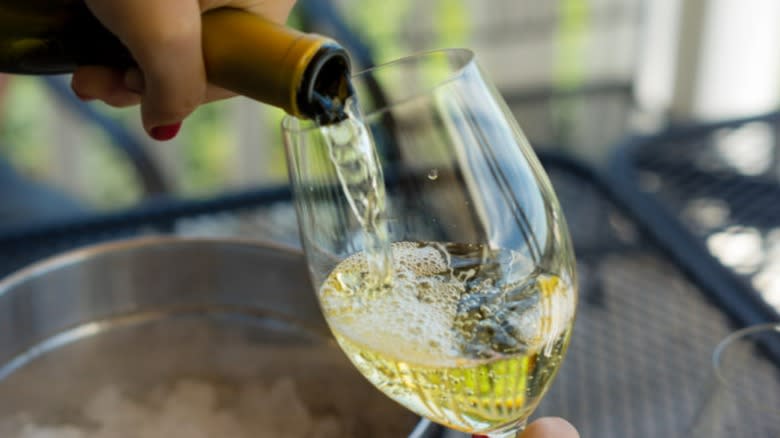
Welcome to Greece, through wine. Malagousia is an indigenous white grape that, after near-extinction, can now be found thriving across the country. A native Mediterranean grape that is acutely expressive, it creates wines that showcase the particular terroir whether it's grown in the hills or on the wind-whipped coastline. Overall, it's a fruit-forward, fuller-bodied wine with big aromatics of citrus blossom, honeysuckle, green bell pepper, ripe stone fruit, and desert thyme.
A pale lemon green, you don't necessarily expect the body that this one delivers. It has an oily body, balanced by a refreshing salinity. It's rich, almost creamy, yet the grape maintains a freshness that helps to strike a balance between the density of concentrated flavor. In certain cases, the malagousia is left to hang on the vine a bit longer, concentrating the sugars and pushing the alcohol levels up toward a sweet wine. In each iteration, you'll likely find notes of chamomile, citrus oil, fresh cheese, and salted honey.
Malagousia's comeback is well worth your time. Search out bottles from different parts of the country to experience all the nuances the grape translates. A great place to start is with the Malagousia from Gerovassiliou. It's texturally rich with pronounced lemon peel, fresh-cut pear, and ripe mango.
La Maliosa Saturnia Bianco Tuscan Orange

A Tuscan orange with big energy, Saturnia Bianco comes from the winery, La Maliosa, headed by woman winemaker, Antonella Manuli. The property is a mix of grape vines and olive trees, producing natural wine and biodynamic olive oil in the hills of central Italy. Saturnia Bianco is a skin-contact wine made from the lesser-known grape, procanico. In its un-macerated form, the grape is quite fresh with citrus fruit, floral aromatics, and wet stone, however in the orange rendition, the grape takes on much richer, complex notes of overly ripe citrus, stone fruit, and honey while keeping that edge of granite.
With a four-week maceration followed by five-plus months in a neutral oak cask, this unfiltered wine boasts big, rich flavors of dried apricot, ginger, candied orange, and forgotten peach. Its deep amber hue and aromatics let you in on its personality straight away, and while it's a bigger orange, it has enough acidity and finishes dry to keep it taught in a way you crave. Along with the saturated orange and candied fruit notes it has a bit of yeastiness, leading to a fun and funky combination of bitter orange tannins and barnyard, not unlike some sour beers, but with arguably more body and depth.
Les Vins Pirouettes 'Eros By Vincent'

This Alsatian number is an orange wine for the times. Les Vins Pirouettes is an association of vignerons creating zero-intervention wines that reflect the region's diversity of grapes, soils, and creative styles. 'Eros by Vincent' is, indeed, by Vincent Gross, the winemaker of Domaine Gross in Gueberschwihr, France. The dynamic blend of pinot gris, riesling, and silvaner is part of what makes this wine unique, while the limestone imparts a collective minerality, and the skin-maceration hones in some of the softer flavors in the grapes, giving it more pungency and direction.
The maceration with the skin is 25 days, followed by a lees contact rest when the various grape juices really get to know each other and pick up all the butter biscuit and toast notes. The end result is a pronounced and savory wine with notes of juicy tangerine, persimmon, preserved lemon, tomatillo, and hints of white pepper and coriander. The orange marmalade paired with zippy acidity and babbling brook makes this wine both playful and refined. I highly recommend this with a mildly funky goat and sheep cheese.
Troupis Winery Retsina
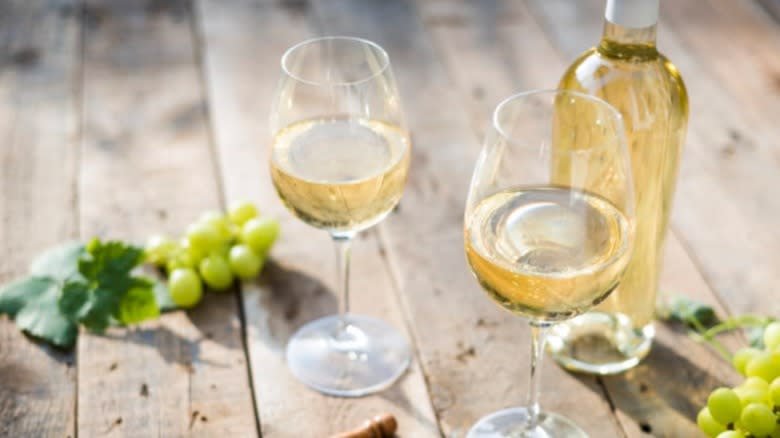
Retsina is polarizing. But if you like it, you like it. And if you aren't familiar, it's worth learning about. An ancient winemaking style that came out of Greece, Retsina is still around today and packs a full (and rather astringent) punch. While the Retsinas of the past were even more powerful than today's versions, the wine is still incredibly distinct thanks to the addition of Aleppo pine resin during the fermentation process.
The wine can be made from numerous white grapes but is often made with assyrtiko, a commonly grown grape well-suited to the terroir. You're also likely to find it made with roditis or savatiano. While the grape characteristics do ring through, they are certainly muffled by the addition of resin, giving powerful aromas of linseed oil, lime, and pine. In an assyrtiko Retsina, those notes are paired with red apple skin, aromatic rose petals, and a distinct salinity. In other versions, the bitterness of fresh rosemary and herbaceousness of raw thyme pair with citrus and sea salt.
Try Retsina if you want to feel like you are drinking a Mediterranean desert beach scene. The subtle skin contact assyrtiko rendition from Troupis Winery is a great introduction to this peculiar wine. Charged acidity is matched by elegant stone fruit, lavender, and, of course, pine.
Day Wines Zibibbo
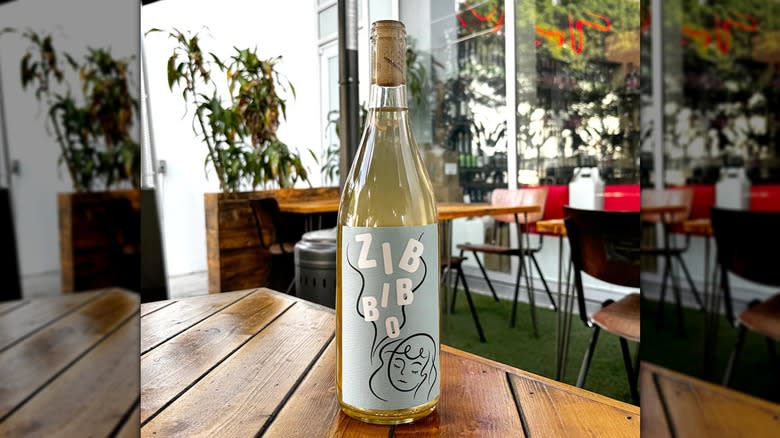
The skin-contact zibibbo (also known as muscat of Alexandrea) from Day Wines is a fun and flirtatious wine that will certainly have you reaching for the bottle to try to figure out what exactly you're drinking. A comfortable resident of Italy, the grape is a rare find in many other places, so this planting in Oregon's Applegate Valley is special in and of itself. Zibibbo is a wildly aromatic white grape, often made into a sweet wine -- think of a moscato wine. But when fermented to dry, as this wine is, it's a collection of all those beautiful floral aromatics without the distraction of residual sugar. Add in a skin-maceration, and you've got a punchy and dreamy wine that you won't want to put down.
The color of un-sulphured, dried apricots, it's cloudy, opaque, and somewhat luscious looking. An explosion of stone fruit and florals on the nose, it's more than generous in white flower, peach skin, mandarin orange, and lychee. It's quite heavily textured, but still bright and brings loads of dried peach, apricot, mango, and orange blossom to your tongue. The uniquely aromatic grape made in an uncharacteristic style really sets this wine apart.
Krasno Goriška Brda Orange

If you're not already on the Slovenian wine train, you can start with this orange number from Klet Brda as your introduction. Long overlooked, there are some really stunning and compelling wines coming out of the country, and this wine is no exception. The Goriška Brda appellation is nestled between the Alps and the Adriatic Sea. Historically a region of skin-macerated white wines, it has more or less kept with tradition, making aromatic white grapes into orange wines through traditional techniques.
The Krasno Goriška Brda orange is 40% ribolla gialla, 30% malvasia, and 30% sauvignonasse. Fermented separately, the grapes have varying amounts of skin-maceration before blending to achieve a thoughtful and delicious final product. A deep goldenrod color, the wine has pungent aromas of quince, pear, and almond. It has notes of orange peel, juicy tangerine, wet stone, fresh farmer's cheese, and a bit of chrysanthemum. Not overly heavy, it falls more towards a medium body with good acidity keeping it fresh and subtly grippy tannins keeping it taught. It's a trio of grapes that really knock it out of the park, particularly when made in this style.
Quinta Do Javali Pét Nat Rosé
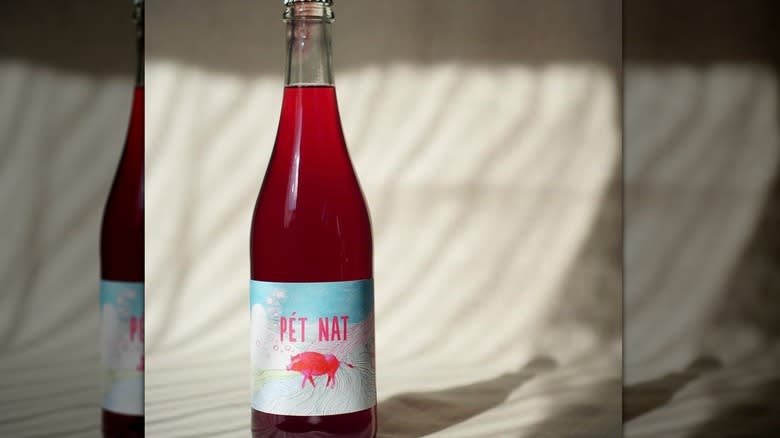
Looking for explosive, punchy rosé bubbles? The pét nat from Quinta do Javali is it. From the Douro wine region in Portugal, Quinta do Javali has made an energetic and playful bottle of bubbles from three local grapes: Tinta roriz, tinta barroca, and touriga franca. Hand-harvested from very steep slopes, it's a labor of love, one that you taste in the wine. Naturally fermented, it's got all those flavorful goodies that come from a bit of residual fine lees being left behind, including a bit of haze.
Its candy raspberry color leads right into similar notes of macerated red fruit with mouth-watering acidity. Cranberry juice, ripe raspberry, and tart red cherry are matched by citrus zest, barnyard funk, and sophisticated minerality. It kind of gives sparkling summer cocktail energy with a side of sour red candy but in a very adult way. It's refreshing, low-alcohol, and unexpected. Overall it's a delicious wine that showcases the three indigenous Portuguese grapes from this renowned region. This is a wine to be shared with good company and some fun bites. It is bubbles, after all.
Wild Arc Farm Aurora
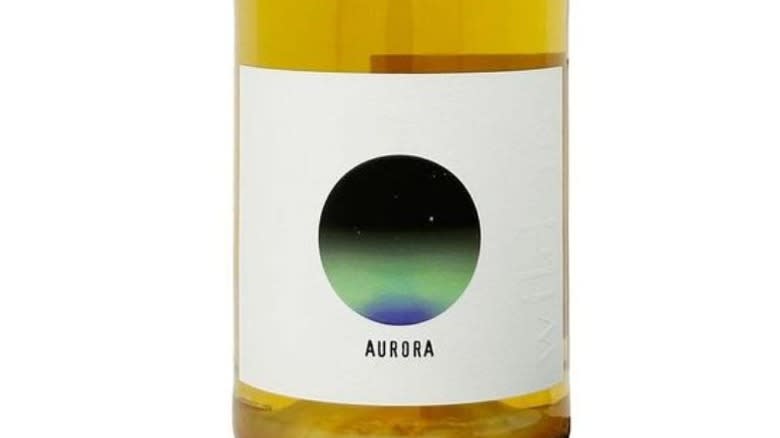
Wild Arc Farm is a small vineyard set in the Hudson Valley in New York state. New to winemaking, Todd Cavallo and Crystal Cornish set off to explore the budding viticulture potential of the valley. Experimenting with regenerative permaculture and grape growing, they are delving into hybrid and old-school vnifera varieties that have gone completely untouched until now. The Aurora highlights two white grapes, aurore and traminette, in a sparkling format that is interesting on multiple levels.
Aurure is a European Vitis Vinifera variety with pinkish-white skin that is light-bodied and floral. It's particularly unique in that the wine can be eaten as a table grape or used in winemaking. Traminette is a cross between two grapes, one being gewürztraminer, which is distinctly aromatic. The winter-hardy grapes can withstand the harsh New York winters, and, combined make a tropical fruit-forward wine sprinkled with notes of aromatic wildflower, ginger, kumquat, and hay. They are two varietals you've likely never tasted, and will be hard-pressed to find again. Aurora is a forward-thinking expression of the future of grape growing in a changing wine landscape.
Dila-O Saperavi
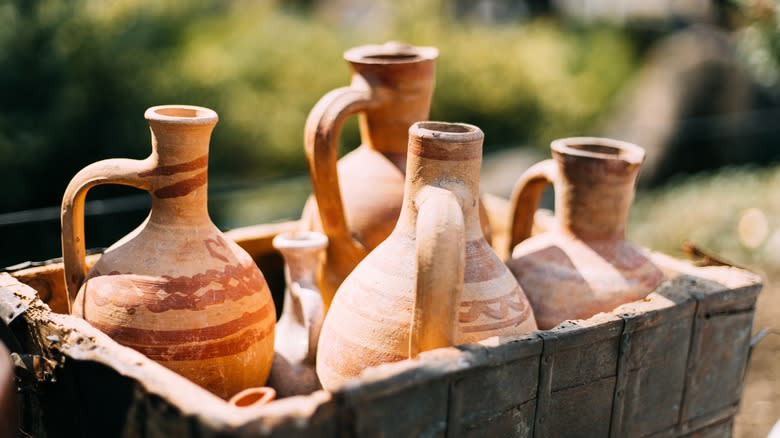
Indigenous to the region of Kakheti, Georgia Saperavi is a bit of an obscure grape. It's a distinct part of the wine culture there, only recently finding its way to other grape-growing regions. The expressive grape is unique in that both the skin and flesh of the berry are red. This creates deeply hued wines with rich, dark shades of red. The grapes are small with thick skins, the combination of which contributes heady tannins to the red wines.
Typically aged in the traditional clay vessels known as qvevri or amphora, small amounts of oxygen can penetrate through the ceramic to the wine, rounding out the aggressive tannins over time without imparting oak notes from a toasted French cask. The result is wines with deep saturated red and black fruit notes. Think pungent blackberries, Italian prune plums (but juicier), blackcurrant, dark chocolate, and licorice. Saperavi is typically a full-bodied wine with good acid and grippy tannins that is best paired with an equally big-personality dinner. Something a bit rustic and brooding, like a slowly-cooked pot roast or roasted lamb with charred vegetables.
Dila-O is a small winery in the Kakheti region making a dynamic and traditional style of saperavi full of rich plum, violet, and a pinch of black pepper.
Read the original article on Tasting Table


